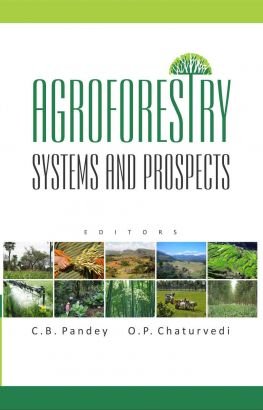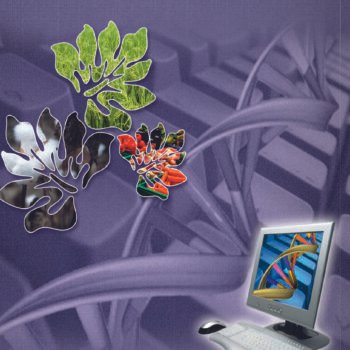| The book comprises a total of 26 chapters, with the initial ten delving into traditional agroforestry systems prevalent in various regions of our nation. Homegardens, which feature a multi-tiered structure, represent another example of a traditional agroforestry system commonly found in the northeastern and southern parts of our country. Chapters 11 to 14 focus on contemporary agroforestry models and the mechanism of competitive interaction in agroforestry systems. Chapters 15 to 19 discuss the role of agroforestry in conserving natural resources and nutrient cycling.
Trees serve both protective and productive functions. Their canopies shield the soil from the impact of rainfall and wind, while their fine roots help bind soil particles together, thereby protecting the soil from erosion. Trees also recycle leaf and root litter and nutrients, making the system at least semi-sustainable. Certain agroforestry models, such as shelterbelts and windbreaks, help safeguard the environment from dust and sand dunes drifting, while other models like medicinal plant-based systems provide medicinal and other high-value crops. These service-oriented functions of agroforestry are covered in chapters 20 to 23. Tree improvement is a crucial aspect of agroforestry research, helping to develop superior trees for different agroforestry models. The multiplication of propagules and planting materials are equally vital for the development of agroforestry. These matters are elaborated upon in chapters 24 and 25. However, agroforestry systems demand more parameters due to their perennial nature. The last chapter examines economic parameters, such as NPV, IRR, annuity, and sensitivity, in great detail. |
Related products
Dear Life Get Well Soon By. Arpit Agrawal
(0 Reviews)
"THE POWER OF YOUR SUBCONSCIOUS MIND By. Joseph Murphy"
(0 Reviews)
Dvte Mr Manuls Rci (9Books Set) by Rci
(0 Reviews)
"ANIMAL FARM By. George Orwell"
(0 Reviews)
Sociological Foundations Of Education (Set In 2 Vol.) by Dr.Ajit Mondal
(0 Reviews)
HOW TO STOP WORRYING & START LIVING By. Dale Carnegie
(0 Reviews)
Dear Life Get Well Soon By. Arpit Agrawal
(0 Reviews)
"THE POWER OF YOUR SUBCONSCIOUS MIND By. Joseph Murphy"
(0 Reviews)
Dvte Mr Manuls Rci (9Books Set) by Rci
(0 Reviews)
"ANIMAL FARM By. George Orwell"
(0 Reviews)
Sociological Foundations Of Education (Set In 2 Vol.) by Dr.Ajit Mondal
(0 Reviews)
HOW TO STOP WORRYING & START LIVING By. Dale Carnegie
(0 Reviews)
Dear Life Get Well Soon By. Arpit Agrawal
(0 Reviews)
"THE POWER OF YOUR SUBCONSCIOUS MIND By. Joseph Murphy"
(0 Reviews)
Dvte Mr Manuls Rci (9Books Set) by Rci
(0 Reviews)
"ANIMAL FARM By. George Orwell"
(0 Reviews)

















